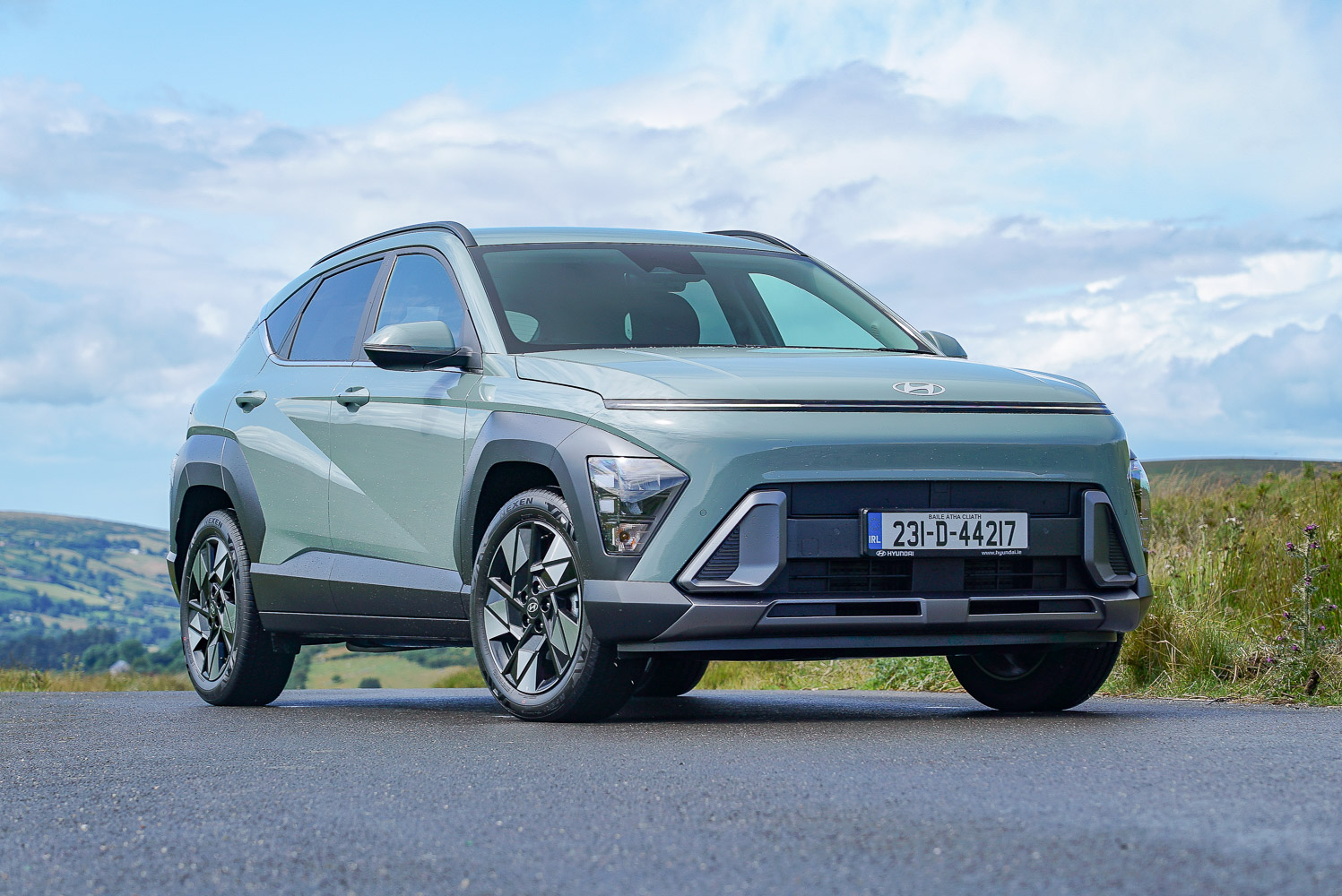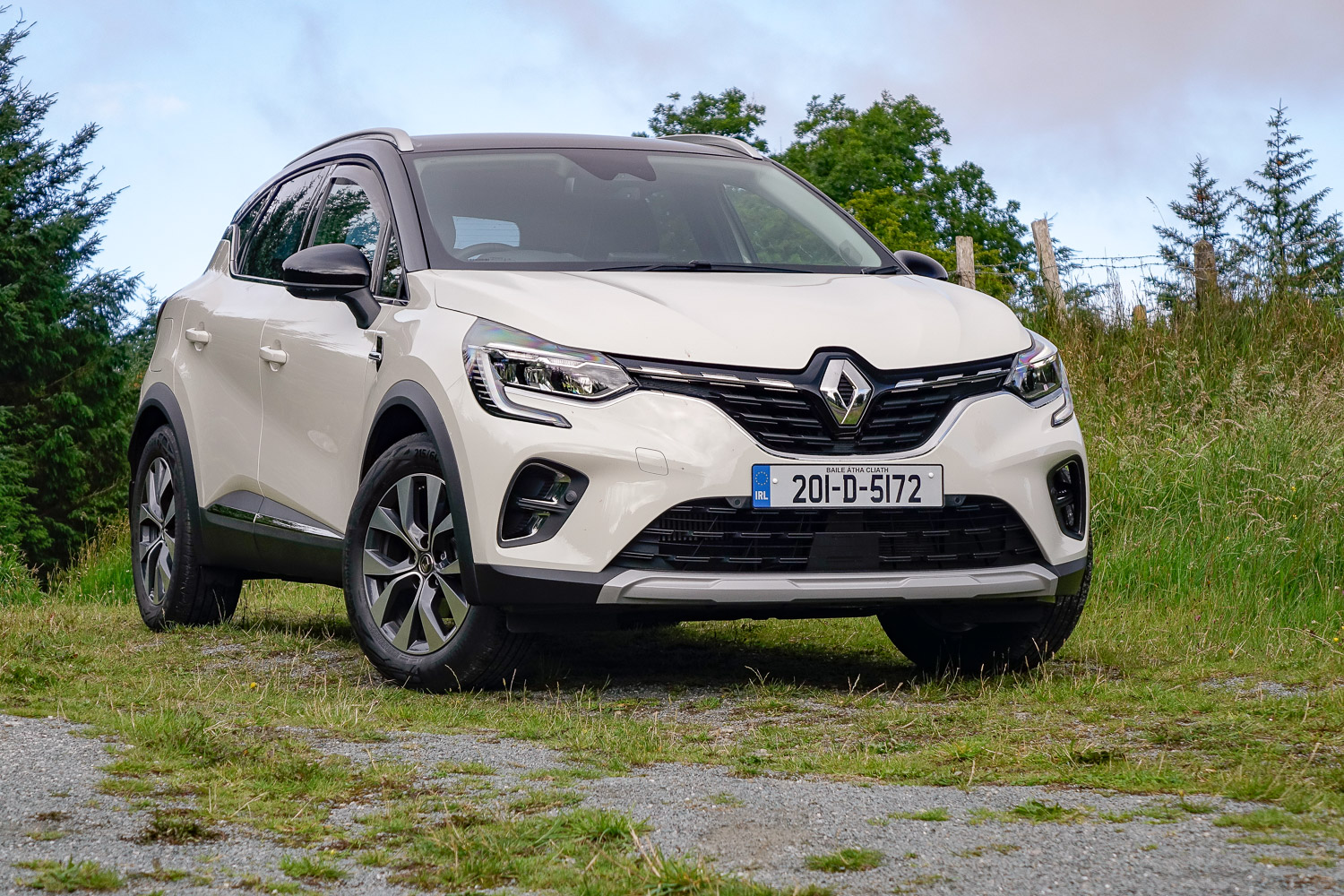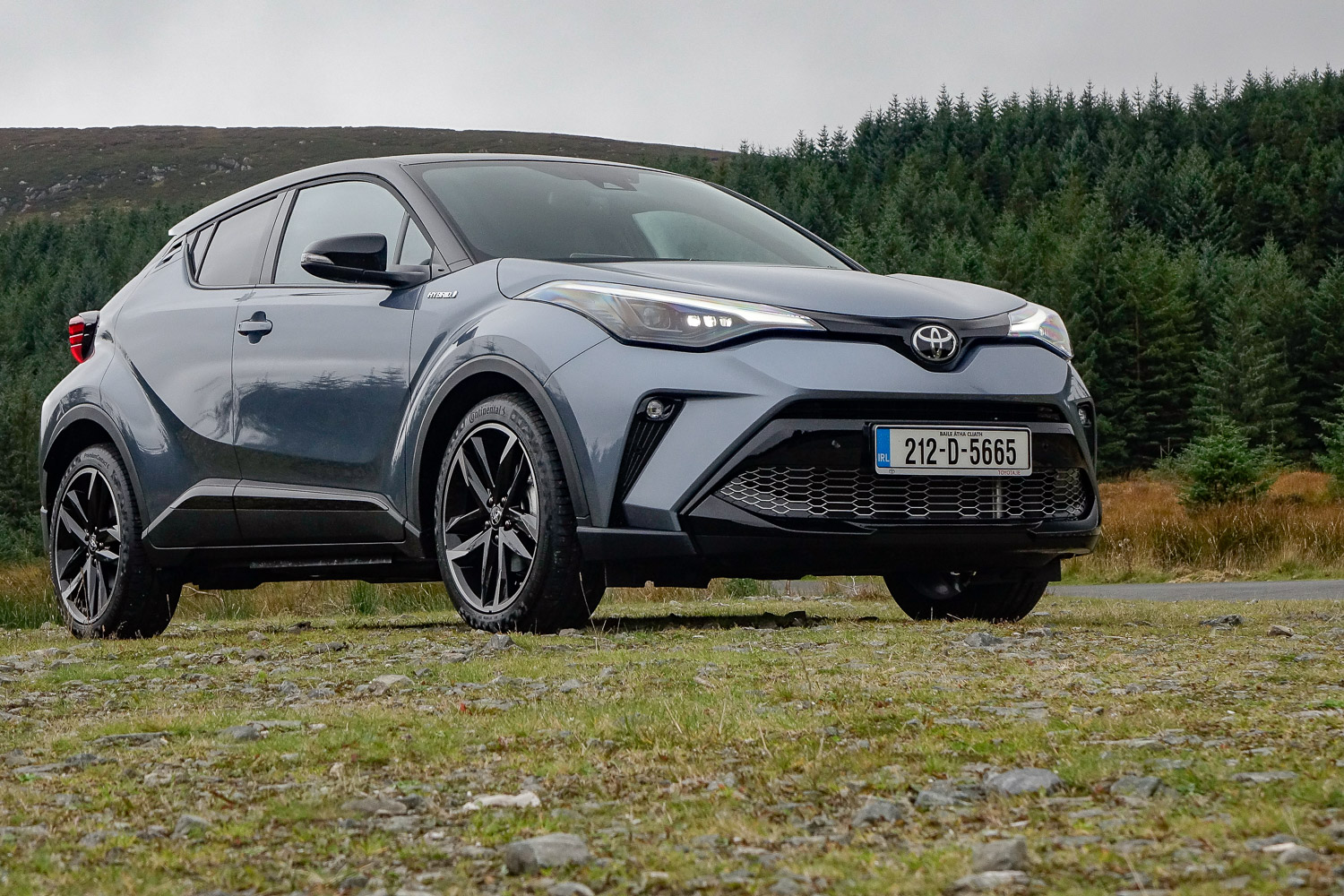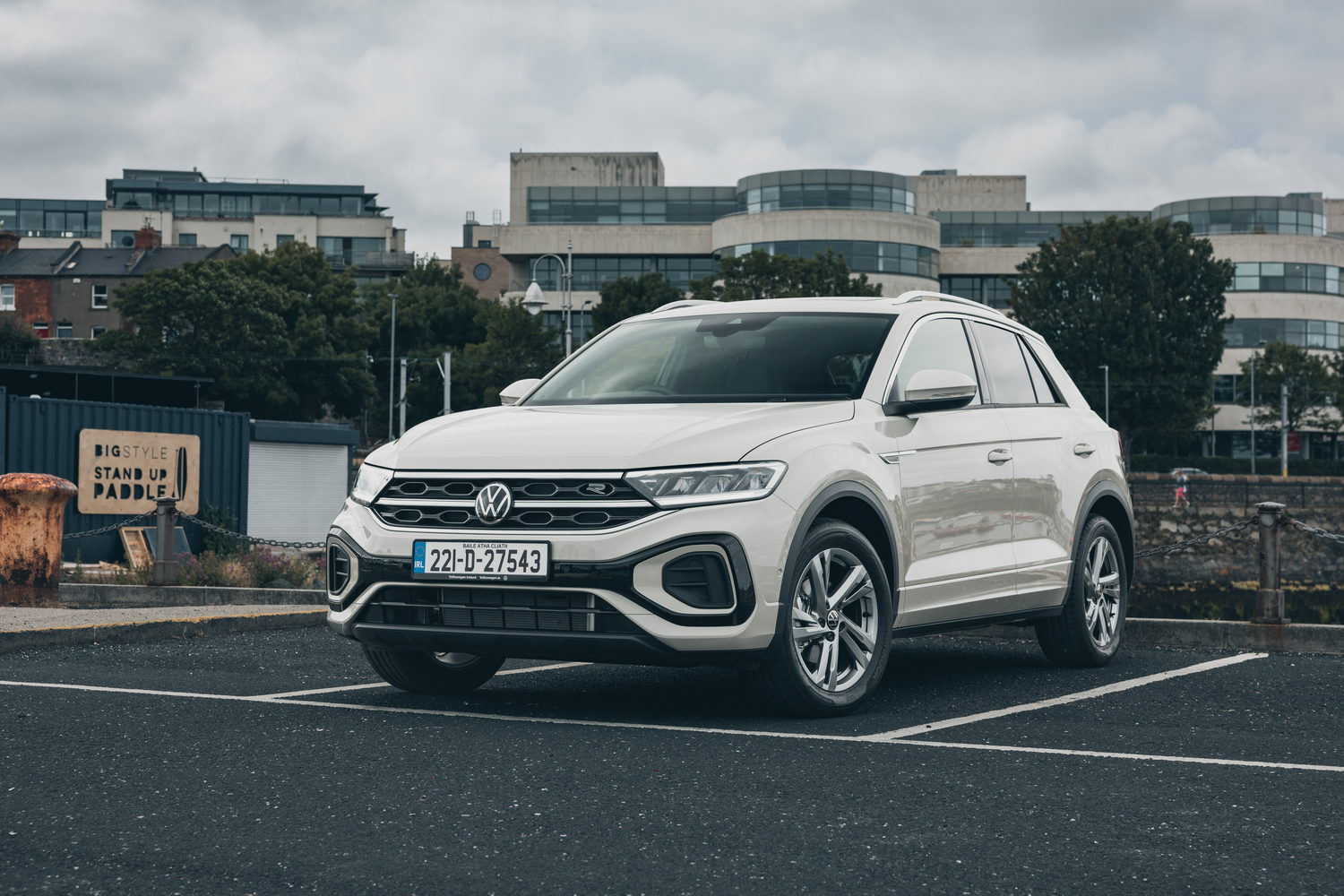Hyundai Kona overview
With the arrival of the second-generation Kona, Hyundai Ireland is opening targeting the top-selling Toyota C-HR and has high hopes for the Kona to become the country's best-selling B-segment SUV. Such a bold statement of intent is backed up by a bold new appearance for the Kona, a car that is significantly larger than the original. Indeed, with a wheelbase just 20 millimetres shorter than that of the Hyundai Tucson, the new Kona is likely to appeal to a much wider audience than before. Petrol and hybrid models are available from launch - with the Kona Electric arriving later in 2023 - and Hyundai Ireland expects the hybrid version to outsell the petrol option by a considerable margin. Other rivals mentioned at the car's introduction include the Toyota Corolla Cross, the SEAT Arona and Ford Puma.
The Hyundai Kona model range
Irish prices kick off at €30,895. The entry-level powertrain is the simple petrol engine, a turbocharged 1.0-litre, three-cylinder unit making 120hp and 172Nm of torque. It comes only with a manual gearbox for now and the CO2 emissions rating is 130-135g/km depending on specification.
The base trim line is called Signature and it includes 16-inch alloy wheels, climate control, cruise control, parking sensors front and rear, keyless entry and start, 12.3-inch touchscreen infotainment, navigation, Bluetooth telephony, Apple CarPlay and Android Auto, two USB sockets and an extensive list of active and passive safety features standard across the line-up.
Elegance adds 17-inch wheels, heated front seats with lumbar support adjustment for the driver, auto wipers, rear passenger vents, a heated steering wheel, power-folding door mirrors, digital instruments on a 12.3-inch display and a wireless charging pad.
Hyundai Ireland has received more interest in the sporty-looking N-Line specification than expected, so will offer it from the off in the Kona. It adds 18-inch wheels, an even more distinctive exterior styling pack and an N-Line interior including a unique gear lever and seats. At the time of writing, this is only available with the petrol engine, at €34,395.
The hybrid model tested here is offered in Signature or Elegance guises, starting at €34,295, and though we know that the new Kona Electric will launch in autumn this year, Irish pricing has yet to be confirmed. It is expected to have a range of not far off 500km.
The Hyundai Kona interior
Inside, the big news is a welcome increase in space. The old Kona felt little larger than a supermini in the cabin, and it had a relatively small boot, too, but thanks to an increase in the overall size of the car, the passenger room is comparable to that of some crossovers and SUVs in the class above. Indeed, Hyundai admits that the Kona has a little more front legroom than its own Tucson and, while the Tucson is larger in the back, the Kona is noticeably more spacious than before, easily accommodating adults now, when they might have baulked at the idea in the original model.
There are ISOFIX child seat mounting points in the outer two rear seats, as is the norm, and a relatively low 'transmission tunnel' in the middle so a third rear passenger can fit in when required. In the Elegance model, there are air vents in the back as well, while we noticed that the doors open wide and it's easy to get in and out.
The rear seat back splits 40:20:40 as standard and the boot floor is movable to a higher level if you want a completely flat surface. Even when the floor is at its lowest setting there's some hidden storage underneath it. Hyundai quotes a 466-litre volume when the rear seats are in use, which compares well with the previous hybrid model's 361 litres.
Up front, though there are hints of the old Kona in terms of the layout and switchgear, all is new. It isn't just a direct copy from the Hyundai Ioniq 5/6, either, though some inspiration has been taken from those EVs. For example, the tactile leather steering wheel doesn't have any Hyundai logo on it and while it looks unusually sculpted, it is good to hold and not too thick of rim, either. Behind it in the hybrid model is a set of plastic gearchange paddles for the dual-clutch automatic gearbox, but we found little reason to use them.
The drive selector is on the right of the wheel, below the wiper stalk. It works the same as that used in the Ioniq models (you twist it forward to go forward, back to go back), but is rectangular while they are round. For some reason that makes it more satisfying to use.
In Elegance models, there are two 12.3-inch displays in one dashboard enclosure, and it looks smart. As ever with Hyundai touchscreens, the menu is easy to find your way around and there's a huge number of features to explore - or just connect up your smartphone for mirroring as many will do. Aside from that, we're incredibly happy to see that Hyundai is sticking with separate physical switchgear for the climate control system.
Unlike the more unconventional Hyundai Ioniq 6, the Kona's window switches are on the doors, yet it has a noticeably wide and spacious centre console - helped no doubt by the location of the drive selector on the steering column. At the front of console are two USB-C ports (neatly switchable for recharging or media use) and a tactile little cover for the 12-volt power outlet. Under that section in the Elegance model is a raised, rubberised wireless charging pad that effectively holds a phone in place.
Further back - behind the drive mode control and other buttons for the heated seats, etc. - is a large rectangular space that can be configured in numerous ways. The cupholders can be retracted, there are other dividers that can be moved and there's a small, covered box under the central armrest. Thankfully, the main glovebox is of a decent size, as are the door pockets.
Continuing with practicalities, there's loads of adjustment in the driver's seat and steering wheel, with good visibility in all directions.
The Kona's cabin is perhaps not as sub-consciously design-led as the Hyundai Ioniq 5's, but it is just as modern, features more sustainable materials than ever and it is eminently practical, too. Buyers that previously dismissed the Kona because it was too small for their needs should really go check it out in person.
The Hyundai Kona Hybrid driving experience
The Kona Hybrid features a naturally-aspirated (i.e., no turbo) 1.6-litre petrol engine, paired with a 32kW (43hp) electric motor. It's not a plug-in hybrid, so there's no official electric range as such. Instead, like the best-selling hybrids on the market, the system switches between electric and petrol power as it sees fit. At very low speeds it's nearly always running on the battery alone, though it dips into EV mode regularly at other times and the engine seamlessly switches off almost every time you take your foot off the accelerator.
There's up to 141hp and a notably useful 265Nm of torque available when the engine and motor work together, though the Kona feels nippy around town rather than fast out on the open road. You can choose the Sport mode for a little more response (doing so brings with it an amusing animation in the instruments that paints a red-and-white kerb around the digital dials), in which case it can momentarily spin its front wheels when exiting a wet T-junction if you're not careful, but we found the Kona to be at its best in the default Eco setting and with a relaxed driving style.
Then you'll appreciate the well-judged suppleness of the chassis and the exceptional smoothness of the transmission. It's a seven-speed, dual-clutch system that is uncannily slick in operation. Rarely do you feel gear changes happening and yet it always seems to be in the right gear. What's more, it keeps the engine revs down to a minimum unless you push your foot all the way down on the accelerator.
That pays dividends in terms of civility in the cabin, aided by the noticeably low road and wind noise. Slippery aerodynamics help with the latter and contribute to the Kona's efficiency. In a week of mixed driving - including a jaunt into the mountains for the photographs - we averaged 5.6 litres/100km.
Our verdict on the Hyundai Kona Hybrid
Hyundai has completely reinvented the Kona. It gets a dramatic new exterior and a much larger and more impressive interior than before, while its refinement has taken a step up, too. In truth, the car feels like it has stepped up a class, and yet its pricing keeps it in contention against smaller and less-well-specified alternatives. We're really looking forward to the new electric version, but even when that does arrive, we expect that demand for the smooth hybrid will continue to be strong.
































